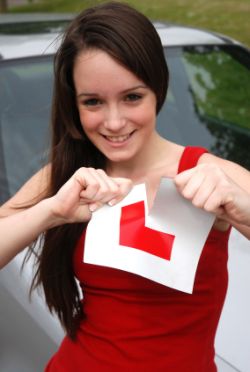Testing your driving ability
The driving part of the test to assess if you are safe to let on the roads is called the practical test, and it lasts in the region of 40 minutes in total. The purpose is to assess if you can drive to a sufficient and safe enough standard in order to be able to be ready to drive independently, in the view of the examiner. A range of manoeuvres that you perform are also assessed which helps to see your control of the vehicle and arrangement of the space around your car - for instance when performing reversing etc.
If you are having lessons with a driving school, then they will ensure that the vehicle you use is one that can be used in a driving test, but if you are not and are using your own vehicle then you need to ensure that it is one that can be used in a driving test: there is a list of makes and models that you can't use on the DirectGov website here:
http://www.direct.gov.uk/en/Motoring/LearnerAndNewDrivers/PracticalTest/DG_173040
Many people get very nervous when it comes to the practical test, and some people are shaking so much before they get in the car, and others are unable to keep their food down the morning before! Whilst people get nervous for the theory test too, for some reason the practical test seems to bring out even more nerves in people.
To some extent this is because you can't control other road users and what they do, and we've all heard stories of people who are really unlucky when confronted with some very awkward situation whilst on their driving test that, in normal road conditions they would not have come across and therefore would not have had that opportunity to fail their test.
Also of course you might panic about your ability to control the car and whether you are ready for the test, but remember that your driving instructor would not have recommended you take the test now if they did not think that you had a good chance of passing if you drive to your ability.
Related Articles...
What to do at a box junction
The box junction is quite common but despite this there are a whole wide range of ways in which different drivers interpret what they are supposed to do at them so you will see different behaviours...
Driving Theory Stopping Distances
Stopping distances refer to the distance that you car is going to travel from the time that you decide that you need to press the brake through the time that the vehicle physically stops...
The lane discipline of a motorway
Driving on a motorway is not something you will be able to do until you pass your test, and therefore it is important to understand as much about motorway driving as you can before your first...
The photocard driving licence
The new type of driving licence is a photocard, and it has several features on it that it is worth understanding once you are issued with your photocard driving licence.
It contains your...
What to do if you breakdown at a level crossing
Driving is potentially dangerous, but it is important not to worry about things that could happen when driving but at the same time you should know what to do in the unlikely event that something...
The ABC of dealing with casualties
The ABC refers to how to treat casualties if you are involved in an accident but not injured, or indeed if you are at the scene where an accident occurs.
The A refers to the word airway. This...
Practical Driving Test
There is an online booking system available for a practical driving test which you can access from the DirectGov website.
The web address to do this is: ...
Your steering system
When it comes to driving the car, it is safe to say that the steering wheel is clearly an essential part! If you can't steer your vehicle, then you clearly cannot drive it.
There are two...
What are greener fuels
One of the most well known of the green fuels is something that is called Biofuel.
Biofuel is a group of different fuels rather than an individual fuel in itself, and the class contains things...
Regulations relating to stopping
When you are driving you may not necessarily think much about stopping and simply stop automatically when a light is on red. But infact knowing when you should stop on the road is very important...
Back to home page of driving theory test questions

